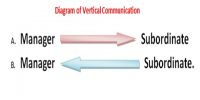Voting in the Meeting
Voting is a democratic practice in conducting company meetings. Such voting generally indicates the voting right of the participants of the meetings.
After a motion has been discussed in a meeting, it is put to the vote to ascertain the opinions of the members of the meeting. It is rare to have unanimity of the members’ opinion on a particular motion before the meeting. Therefore, the decisions or resolutions are taken by the majority’s opinion, which is determined by voting.
However, a voter for a general meeting must be an individual. Their name must be on the body corporate roll as:
- the lot owner
- the representative of a lot owner
- someone nominated by a corporate owner (the corporate nominee).
The number of voters for a general meeting may be different to the number of lots in the scheme. Working out the number of voters compared to the number of lots is only relevant when working out a quorum (minimum number of people) for a general meeting.
For example, a person who owns more than 1 lot in the same name, is normally only considered as being 1 voter (1 individual).
It is the right of the shareholders of a public limited company to attend in the company meetings and to give their vote to pass or not to pass the agenda of the meeting. Such fight is endowed to them by the Companies Act. To exercise the voting right, a shareholder must be present in person or may nominate a proxy to give the vote.















